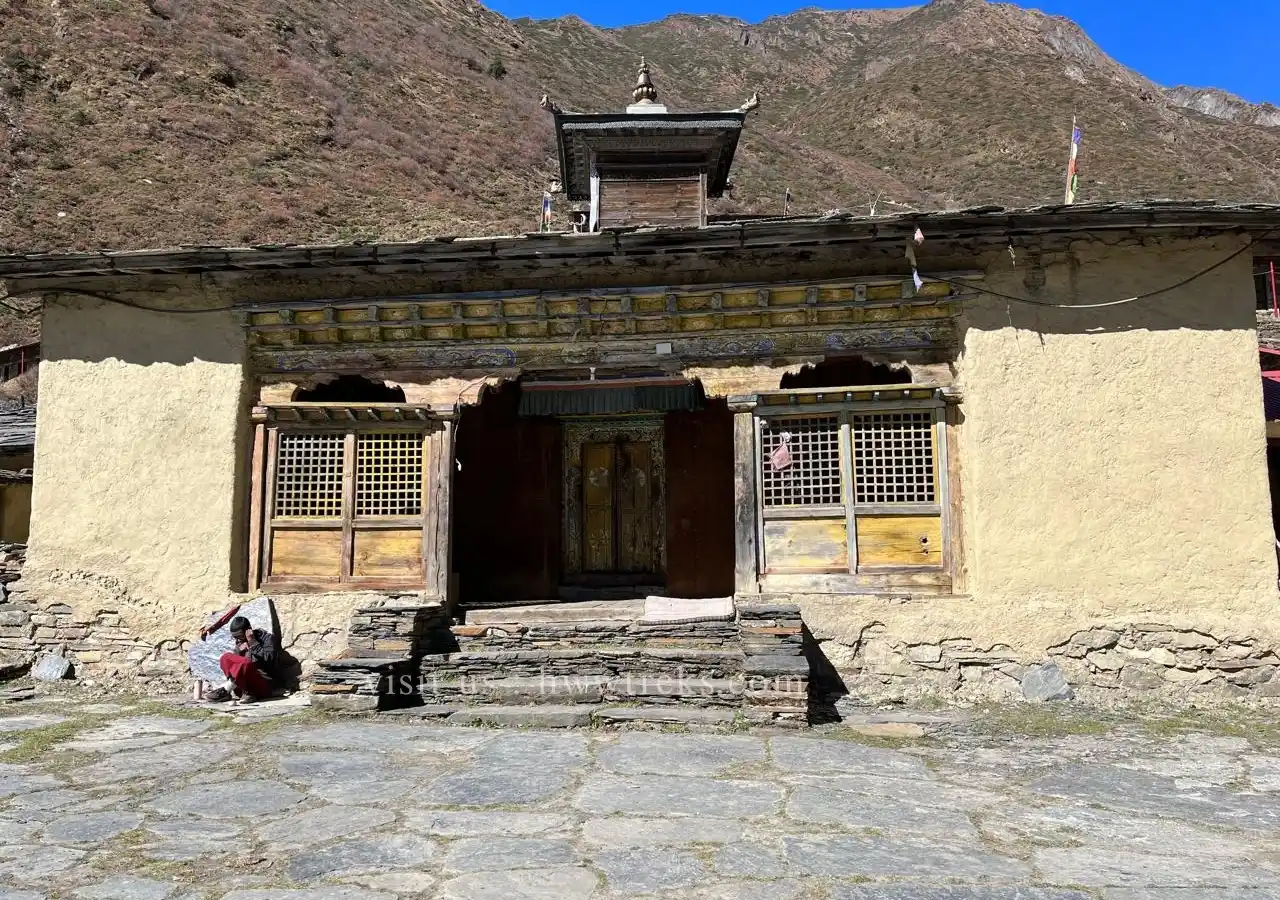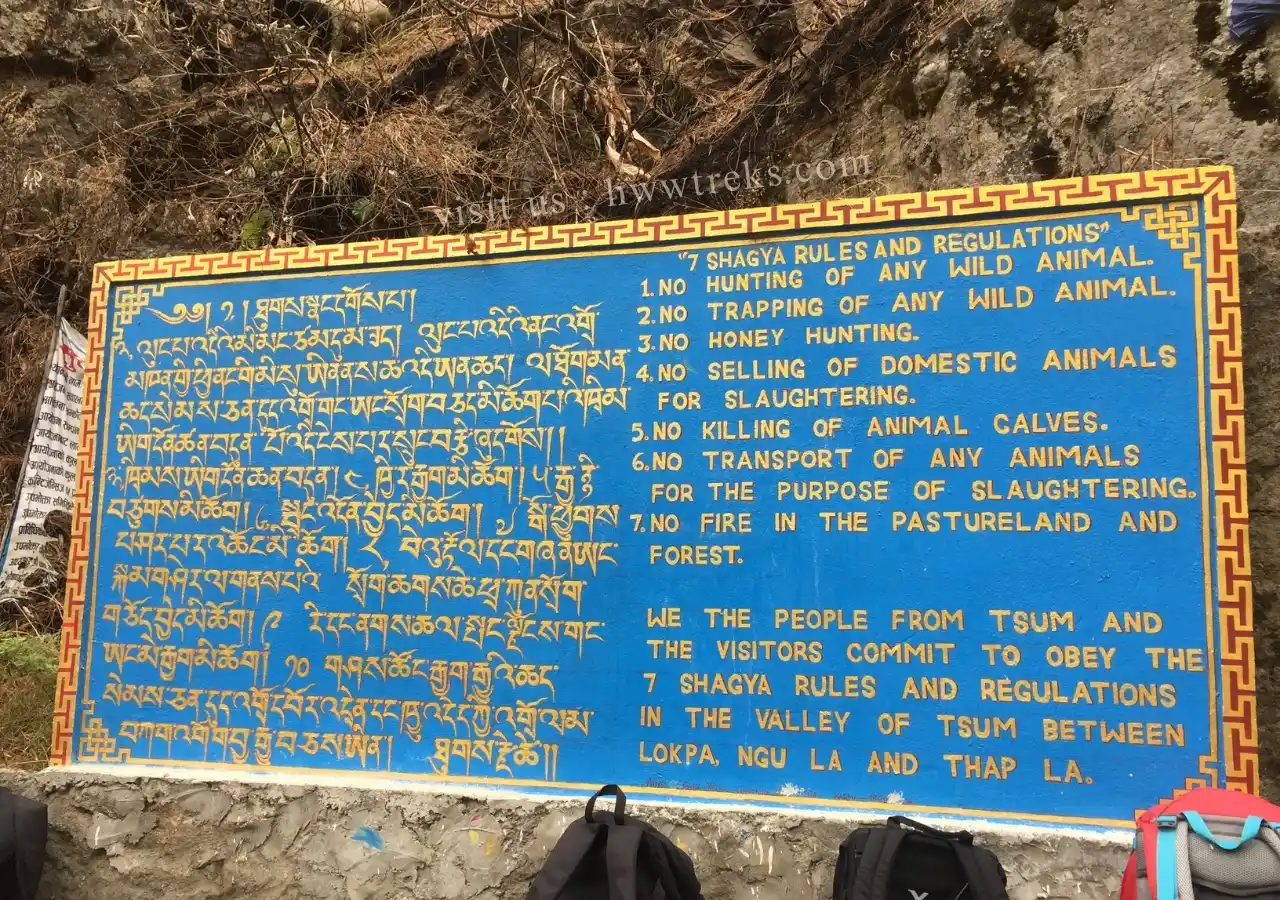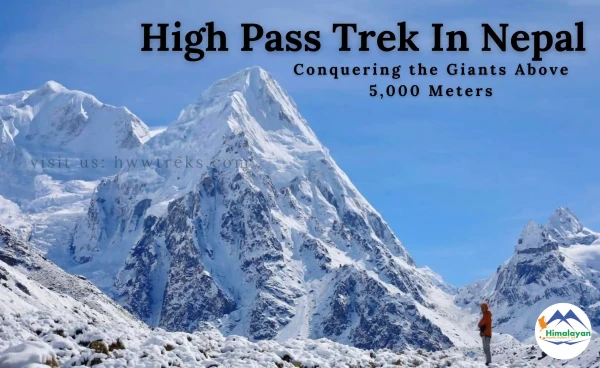- 09/22/2025
- Tags: Trekking in Nepal
- Yangchen Lhamo Gurung
Shyagya Tradition: Tsum Valley's No-Kill Promise
Tsum Valley is a sacred Tibetan Buddhist Valley located in the Gorkha district of Nepal. It sits at an elevation of 2000 to 3500 meters from sea level, surrounded by the majestic Ganesh Himal from the east and the Sringi snow range from the rest of all directions (i.e., west, north, and south). These ranges and mountains protect the valley within their lap and provide sufficient amounts of water and air for wheat and other food items cultivation.
The Tsum Valley has another name: “Kimolung Beyul”, which in the Tibetan language means “Place of Happiness” or “Place of Peace”. This valley is famous for its ancient culture, awe-inspiring landscape, spiritual Mu Gompa, and especially for the tradition of non-violence toward living beings, where no animal is harmed on the premises. The valley has a sacred tradition, a commitment to non-violence that has transformed this remote corner into a living sanctuary where all the living beings are protected from any harm.
In this blog, we will be diving deeper into the locals' tale, the importance, and the advantages of the practice.
Contents [hide]
What is Shyagya tradtion of Tsum Valley?
The Shyagya tradition represents one of the most remarkable examples of environmental and spiritual conservation in the Tsum Valley. This practice has been continued since 1920 A.D during the Wang Puja by Lama Serap Drukpa Rinpoche and is known to people as the “Shyagya” tradition. This sacred practice has maintained an unbroken chain of non-violence for over a century. The term “Shyagya” comes from the Tibetan and refers to the principle of non-violence and non-killing, creating a protected zone where all forms of life are considered sacred and inviolable.
This tradition extends far beyond a simple restriction on hunting or animal slaughter. It represents a comprehensive philosophy of coexistence, where the local community has voluntarily committed to preserving the natural balance of their ecosystem.
History of Shyagya Tradition

The Shyagya tradition of Tsum valley represents an extraordinary example of community-wide commitment to non-violence and animal protection, a century-old promise. This isn’t just a rule, it is a spiritual observance that has transformed the valley into a solitary sanctuary where humans and animals survive in harmony. One gets to see the animals like blue sheep and other grazing freely near the village with no fear. The locals of the Tsum valley have developed a sense of compassion that goes beyond just animals. Many trekkers and researchers are attracted by this vision and custom, but for the Tsumpas, it has never been a part of promoting tourism. It is simply how their ancestors had lived and the existing generation have been living.
Locals believe to have two different stories about how the Shyagya tradition started. Both are considered true, and together they explain why this practice runs so deep in the valley's culture.
Legend 1: The Hunter Who Changed His Ways
A long time ago, people of the Tsum Valley used to hunt animals for their food. Then one day, a hunter and his dog were tracking down a deer in the mountains. The scared deer entered the Tsum while running away from the hunter and hid near a Buddhist monk who was meditating. The hunter and his dog also came to the place where the monks were contemplating. There, the man experienced something unexpected. The monk's peaceful presence and wise words completely changed the hunter's heart. Right there, he asked forgiveness from the lama and made a solemn vow never to harm animals again.
And this is how the locals believe that the Shyagya tradition started, as the other locals started to follow this example.
Legend 2: Drukpa Rinpoche and the Formal Establishment (1920)
A respected Buddhist teacher named Drukpa Rinpoche visited the Tsum Valley at the invitation of the local nuns. He came from Bhutan and was strictly against animal violence and had never been part of any celebration that included killing animals. While visiting the Tsum Valley, he was amazed by the valley's beauty and spiritual potential. During his stay in the valley, he guided the locals spiritually and removed all the superstitious beliefs and doubts. He also established the famous Mu Gompa and the nunnery “Rachhen Jang Chub Choeling Monastery".
After staying for a long time, when he talked about leaving, the villagers begged him to remain as their spiritual guide. He agreed, but only if everyone committed non-violence toward all animals. The entire community accepted this condition. That agreement in 1920 officially established the Shyagya tradition that continues today.
Seven Rules of Shyagya Tradition

- Not to kill any animals
This primary rule prohibits the intentional killing of animal life, regardless of size or species. This act respects and believes that all sentient beings possess Buddha nature and deserve protection. This rule creates a compassionate lifestyle and eliminates violence from the community. - Not to hunt
Hunting for entertainment, trade, or food is strictly forbidden within the valley so that the wildlife can survive without being disturbed in their natural habitat. This rule eliminates the capturing of wildlife, protects the natural ecosystem, and maintains the valley’s biodiversity. - Not to burn the forest
Burning of forest for any cause, whether it be for agricultural purposes, fuel collection, or for clearing land, is prohibited in Tsum Valley, and by doing so, it preserves the natural environment and habitat of countless wild species and insects. Also, Drukpa Rinpoche was attracted by the natural green beauty of the Tsum Valley, which gives another reason not to burn the forest and greenery. - Not to collect honey
Honey collection is not allowed in the valley to preserve and protect the bee colonies and their vital role in the ecosystem. Bees play a vital role in the pollination of plants. The prohibition prevents disruption of natural hives and maintains the delicate balance between flora and fauna. - Not to sell animals to butchers
Selling animals to a butcher means selling them to be killed, which leads to the trading of meat. This act is strictly prohibited in the valley as it supports nonviolence and the killing of innocent animals. Even if individuals don't personally slaughter animals, facilitating their death through sales violates the community's commitment to protecting all life. - Not to trap animals/ birds
All forms of animal trapping are prohibited, including snares, nets, cages, and other devices designed to capture wildlife. This rule protects both terrestrial and aerial fauna from harm while maintaining their freedom of movement throughout their natural territories. The prohibition recognizes that trapping causes suffering even when animals aren't immediately killed, as captivity and stress violate their natural state. - Not to trade meat
The community completely prohibits buying, selling, or trading in meat products, eliminating their participation in the meat economy. Through this rule, it is ensured that no member of the community supports or gets involved in industries that harm animals. The restriction includes all forms of meat commerce, from local trade to external markets.
Note: You can see these rules on a big board at the main entrance of the Tsum Valley. During your stay in the valley, you are served vegetarian food only, and it is suggested not to carry any meat products by yourself while travelling to Tsum.
To know everything about trekking in Tsum Valley, read our “Tsum Valley Guide Blog”
Benefits of the Shyagya Tradition
- The implementation of the Shyagya tradition has brought numerous benefits to Tsum Valley:
- The conservation of animals, both wildlife and domestic, has maintained the valley’s ecosystem, preserving and creating a natural and common habitat for all animals, promoting ecological balance.
- The practice of non-violence and non-killing has strengthened the spiritual awareness among the local people, encouraging mindfulness and compassion.
- The Shyagaya tradition has been part of Tsum Valley’s cultural identity and shows the community unity and a collective responsibility to protect all forms of life
- The unique concept of non-violence and non-killing attracts conscious people and has been researched across the globe, promoting and supporting tourism within the valley
Conclusion
The Shyagya tradition of Tsum Valley is the living proof of community unity and responsibility toward humans and nature. The exercise of non-killing and non-violence isn’t just a restriction; they are the pathway for harmony and peaceful existence. The seven rules are not just meant to protect the animals and plants; they are about protecting human values. For centuries, the local people of the Tsum valley have proved that the community can survive without violence, where compassion guides every decision. In our modern and future world, where day by day environmental destruction and violence are increasing, this valley has put forward a hope for the whole world. The Shyagya tradition proves that small communities from a small village can make exceptional differences, creating ripples of positive change that extend far beyond mountain borders.



